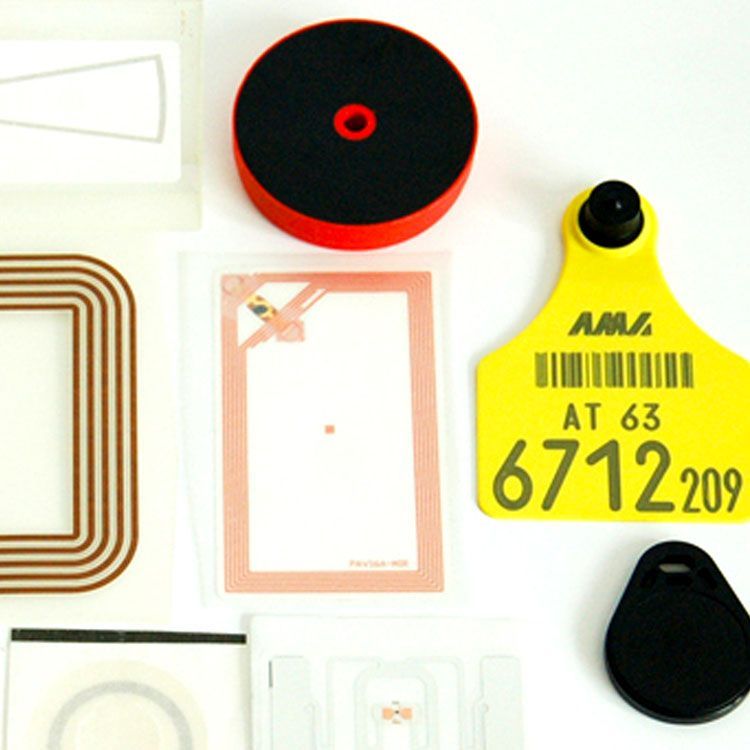RFID in practice: a brief overview
What is RFID?
RFID, short for "Radio-Frequency Identification", is a modern technology for automatic identification and data collection using electromagnetic fields. RFID systems mainly consist of two components: RFID transponders, also known as RFID tags or chips, and RFID readers.

Types of RFID transponders
There are various models of RFID transponders that differ in their design, storage capacity and usability, from wafer-thin stickers to robust modules for labeling shipping containers.
The most important distinguishing feature is the type of energy supply:
- Passive RFID tags, which are powered exclusively by the reader's electromagnetic field, are particularly efficient for use in the logistics sector. Passive RFID tags offer a significant advantage here: as they do not require their own energy source, they are not only cheaper to purchase, but also more durable and require less maintenance than active tags. This makes them ideal for the mass detection of products in warehouses, during transport and in distribution centers.
- Although active RFID tags, which have their own power source in the form of a battery, offer the advantage of a greater range and less interference-prone data transmission, they also have some disadvantages. The most obvious disadvantage is the limited service life of the battery, which has to be regularly maintained and replaced. In addition, active RFID tags are generally larger and heavier than passive tags due to their integrated battery and more complex technology, as well as being more expensive to purchase.
- Semi-passive tags combine the properties of the above-mentioned types, as they have their own power source. However, this is only used to power the internal chip; communication with the RFID reader is passive.
RFID reader
The choice of a suitable reader depends on the planned application:
- Mobile RFID readers: These compact devices are used from offices to production halls, for flexible tracking tasks and inventories.
- Stationary RFID readers: These powerful readers are mounted at entrances or conveyor belts, for example. If tagged containers or vehicles pass these points, they can be recorded automatically. Applications include intralogistics in production and container management.
- Desktop RFID readers: Thanks to their flat design, these readers can also be integrated into work surfaces. They can be easily connected to a computer and are ideal for document capture, for example.
- Integrated RFID readers: These modules are permanently installed in machines and devices, e.g. in payment systems or self-service machines.
Challenges
The use of RFID technology brings with it specific challenges, particularly when dealing with liquids and metals. These materials can interfere with RFID signal transmission, which impairs the readability of the tags. One solution to this is the appropriate mounting of the tags. For example, flap or flag tags can ensure better readability due to their greater distance from the interfering material. There are also special on-metal tags that are optimized for use on metallic surfaces.
RFID is not a substitute for barcodes, as the decision for one of the technologies depends on the specific application. In many cases, RFID and barcodes complement each other: for example, pallets can be equipped with RFID tags while individual products continue to be labeled with barcodes.
An dieser Stelle wird eine Video von YouTube angezeigt, sobald Sie zustimmen. Das Video lädt Inhalte von Google.
Weitere Information finden Sie in unserer Datenschutzerklärung.
